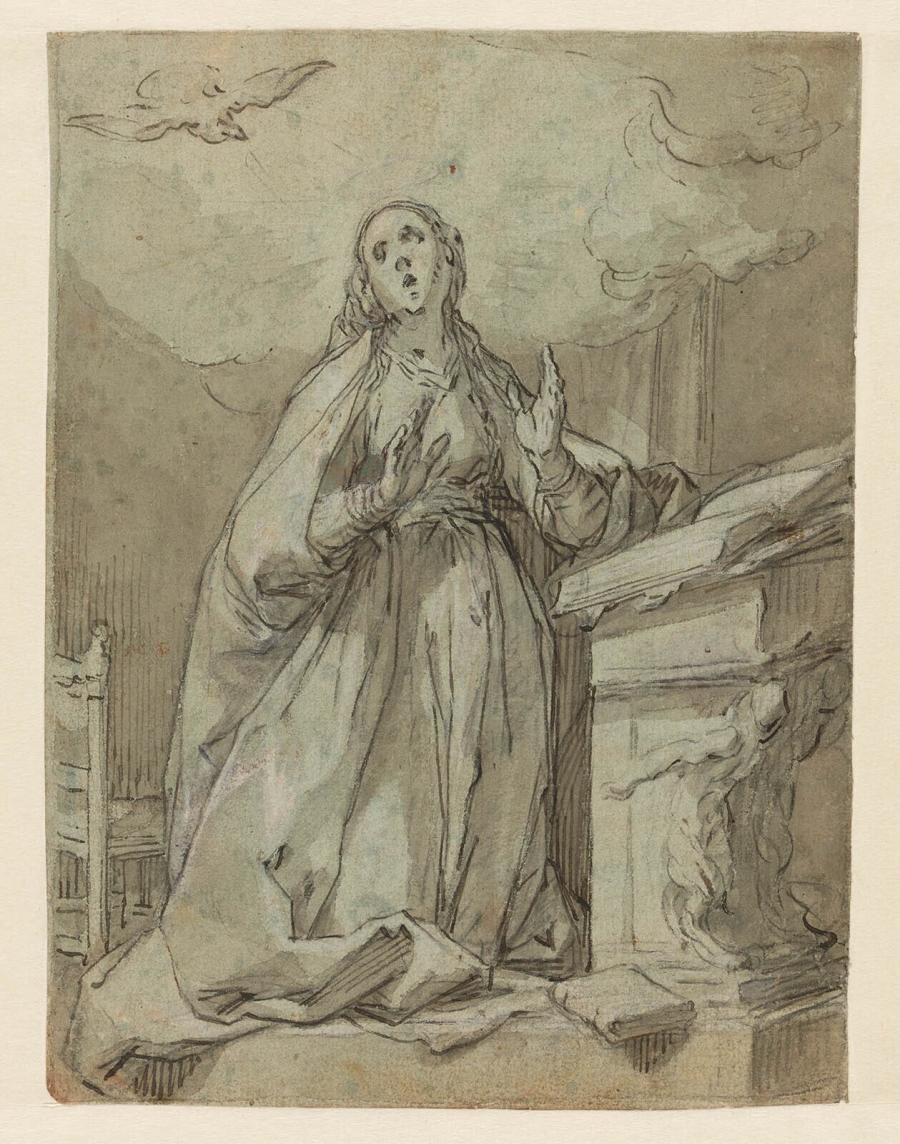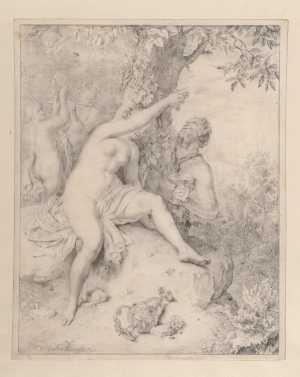Specificaties
| Titel | De Maria van de annunciatie |
|---|---|
| Materiaal en techniek | Zwart krijt, pen in bruine inkt, bruin gewassen, wit gehoogd, doorgegriffeld, vage kaderlijnen in zwart krijt, op (verkleurd) blauw papier, dat aan de keerzijde geheel met houtskool is bedekt |
| Objectsoort |
Tekening
> Tweedimensionaal object
> Kunstvoorwerp
|
| Locatie | Dit object is in het depot |
| Afmetingen |
Hoogte 247 mm Breedte 187 mm |
|---|---|
| Makers |
Tekenaar:
Abraham Bloemaert
|
| Inventarisnummer | AB 11 (PK) |
| Credits | Aankoop 1930 |
| Collectie | Tekeningen & Prenten |
| Verwervingsdatum | 1930 |
| Vervaardigingsdatum | in circa 1615-1618 |
| Signatuur | geen |
| Watermerk | groot gekroond wapenschild (van Prins Maurits van Oranje-Nassau, 1567-1625; schild tweemaal in kwartieren verdeeld, met posthoorn, staande leeuw, gaande leeuw, balk en hartschilden)(vH, 7P)(113 x 86 mm, op P2-5 van links), zeer gelijkend op Heawood 606 (geen plaats, 1601 of later). Hetzelfde watermerk is aanwezig in inv.nr. MB 1961/41 van Bloemaert en in een Bloemaert-tekening in de Fondation Custodia, Paris, inv.nr. 1985-T.29 (Boon 1992, nr. 13). [AE] |
| Conditie | gesleten linker onderhoek, vlekken langs de onderrand |
| Inscripties | 'Fr' [?] (moeilijk te ontcijferen; verso, bovenrand) |
| Merkteken | geen |
| Herkomst | Samuel van Huls, zijn (†) veiling, Den Haag (Swart), 14 mei 1736 evd., Kunstboek K, nr. 439 (‘L’Annonciation de la Vierge’, een van twee tekeningen); Dionis Muilman, zijn (†) veiling, Amsterdam (De Bosch e.a.), 29 maart 1773 evd., Kunstboek N, nr. 962 (‘De Boodschap aan Maria’, met de prent), fl. 20, aan Metayer [exemplaar RKD]; Cornelis Ploos van Amstel (1726-1798), Amsterdam, zijn (†) veiling, Amsterdam (Van der Schley e.a.), 3 maart 1800, Kunstboek X, nr. 6 (‘Twee stuks, toepasselyk op de Boodschap aan Maria […], door A. Bloemaert’, een van twee tekeningen), fl. 15 aan Andriessen [exemplaar RKD]; Veiling Londen (Sotheby’s) 25 juli 1922, nr. 44 (een van twee tekeningen); verworven door het museum, 1930 |
| Tentoonstellingen | Rotterdam 1980; Parijs/Rotterdam 2014, no. 108; Washington 2017, no. # |
| Interne tentoonstellingen |
Vroege Nederlandse tekeningen - Van Bosch tot Bloemaert (deel 2) (2015) |
| Externe tentoonstellingen |
Bosch to Bloemaert. Early Netherlandish Drawings from the Museum Boijmans Van Beuningen (2014) Bosch to Bloemaert. Early Netherlandish Drawings (2017) |
| Onderzoek |
Toon onderzoek Nederlandse tekeningen uit de vijftiende en zestiende eeuw |
| Literatuur | Roethlisberger 1993, dl. 1, p. 216, onder nr. 277; Plomp 2001, pp. 202-203; Bolten 2007, nr. 71; Collection Catalogue 2012 (online) |
| Materiaal | |
| Object | |
| Techniek |
Doorgriffelen
> Doorgegriffeld
> Tekentechniek
> Techniek
> Materiaal en techniek
Bruin gewassen
> Wassen
> Gewassen
> Tekentechniek
> Techniek
> Materiaal en techniek
Wit gehoogd
> Hogen
> Gehoogd
> Tekentechniek
> Techniek
> Materiaal en techniek
|
| Geografische herkomst | Nederland > West-Europa > Europa |

























